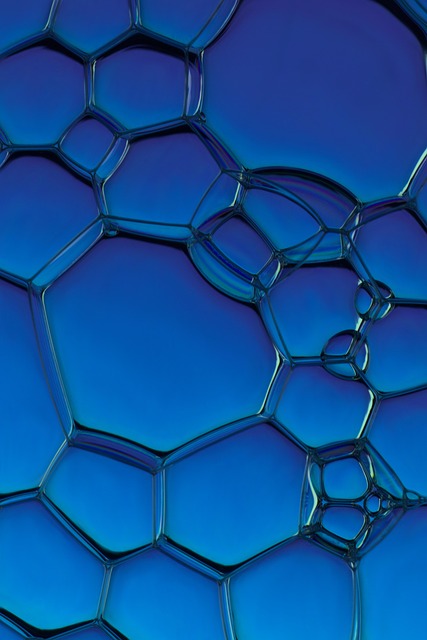# The Aesthetic Shift: How AI is Redefining the Boundaries of Art and Visual Expression
The intersection of artificial intelligence (AI) and the art world has sparked a revolutionary shift in how we perceive, create, and engage with visual expression. As technology continues to evolve, artists, critics, and audiences alike are grappling with the implications of AI-generated art. This transformation is not merely technological; it is fundamentally altering the aesthetic landscape and challenging traditional notions of creativity and authorship. In this article, we will explore the ways in which AI is reshaping the boundaries of art, examining its impact on creation, collaboration, and the future of artistic expression.
## The Emergence of AI as a Creative Tool
AI’s role in the creative process has taken on various forms, from generative algorithms that produce original artworks to sophisticated software that assists artists in refining their techniques. One of the most prominent examples is the use of generative adversarial networks (GANs), which can create images by learning from a vast dataset of existing artworks. These networks operate by pitting two neural networks against each other—the generator, which creates images, and the discriminator, which evaluates their authenticity. This dynamic not only enhances the quality of the generated art but also allows for the exploration of styles and aesthetics previously unimagined.
In addition to GANs, AI-driven tools like DeepArt and Artbreeder enable artists to manipulate and combine existing images, pushing the boundaries of traditional artistic practices. By leveraging these technologies, creators can experiment with new visual languages and techniques, leading to the emergence of hybrid styles that blend human intuition with machine learning. The result is a democratization of art-making, where individuals with varying skill levels can produce compelling visual works, thus expanding the definition of who can be considered an artist.
## Redefining Collaboration Between Human and Machine
The concept of collaboration in art has traditionally involved human artists working together or engaging with different media. However, AI introduces a new dimension to this collaboration, raising questions about authorship and creative agency. Artists are increasingly viewing AI as a partner rather than a mere tool, inviting the machine into their creative process. This shift encourages a dialogue between human creativity and algorithmic processes, resulting in artworks that are co-created by both entities.
Consider the work of artists like Refik Anadol, who utilizes AI to transform data into immersive installations. Through the integration of machine learning algorithms, Anadol creates visual experiences that respond to real-time data inputs, blurring the lines between the digital and physical worlds. Such projects highlight the potential of AI to not only assist in the artistic process but also to generate entirely new forms of expression. This collaborative approach challenges the traditional notion of the solitary artist and invites a broader understanding of creativity as a communal endeavor.
Moreover, the impact of AI on collaboration extends beyond individual artists. Institutions and organizations are beginning to recognize the potential of AI to enhance collective artistic practices. For instance, museums are employing AI to curate exhibitions, analyze audience engagement, and even generate new artworks, thereby redefining the role of curators and art historians. As AI continues to evolve, it will undoubtedly lead to new forms of collaboration that further challenge established norms within the art world.
## The Future of Artistic Expression and Ethical Considerations
As AI-generated art gains prominence, it prompts critical discussions about the future of artistic expression and the ethical implications of machine-generated creativity. The question of authorship looms large—if an AI creates a painting, who owns the rights to that work? How do we attribute value to art that is produced by algorithms? These questions are not merely academic; they have practical implications for artists, collectors, and the art market as a whole.
In addition to authorship, the ethical dimensions of AI in art raise concerns about originality and authenticity. Some critics argue that AI-generated works lack the emotional depth and human experience that characterize traditional art forms. While AI can mimic styles and generate visually appealing images, it may struggle to convey the nuanced narratives and emotions that are often central to human artistic expression. This tension between technology and human creativity will likely shape the discourse around art for years to come.
Looking ahead, the future of art in the age of AI is both exciting and uncertain. As technology continues to advance, artists will have access to increasingly sophisticated tools that can inspire new forms of expression. However, it is crucial for the art community to engage in ongoing conversations about the implications of these technologies. By fostering a critical dialogue around AI and art, we can navigate the challenges and opportunities presented by this aesthetic shift while ensuring that the human experience remains at the forefront of artistic practice.
## Conclusion
The aesthetic shift brought about by AI is redefining the boundaries of art and visual expression in profound ways. By serving as a creative tool, facilitating collaboration, and prompting ethical considerations, AI is not merely a trend but a transformative force within the art world. As artists continue to explore the potential of AI, they are not only expanding their creative horizons but also challenging the very essence of what it means to create and appreciate art. The future of artistic expression lies at this intersection of technology and humanity, where new possibilities await discovery. As we embrace this evolution, it is essential to remain vigilant in our understanding of the implications of AI, ensuring that it serves to enrich, rather than diminish, the human experience of art.

